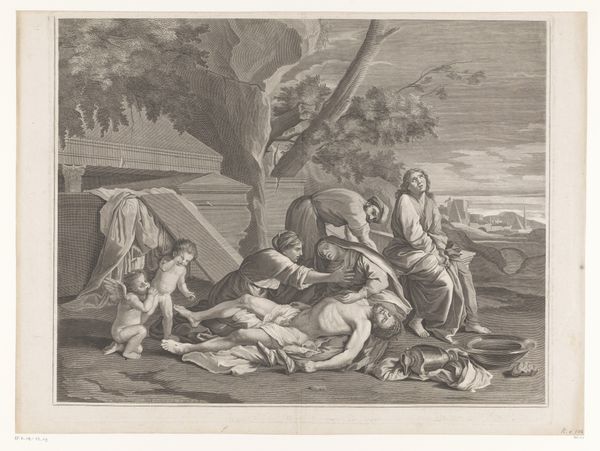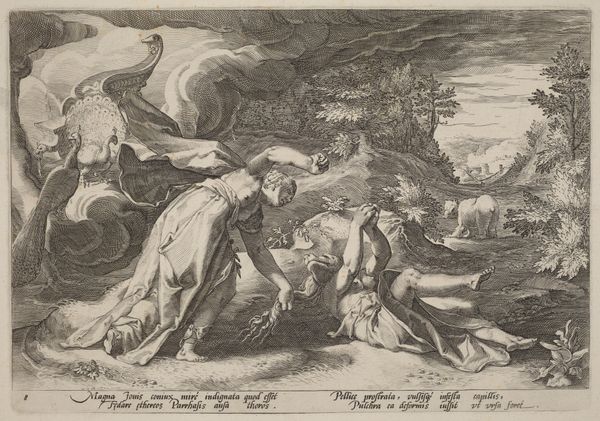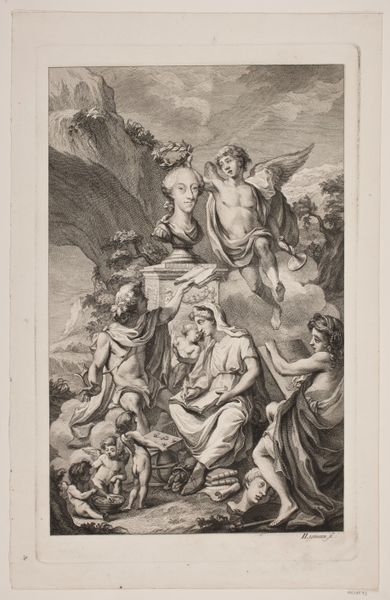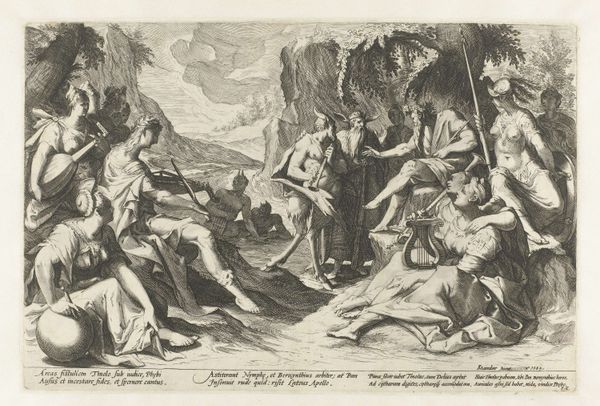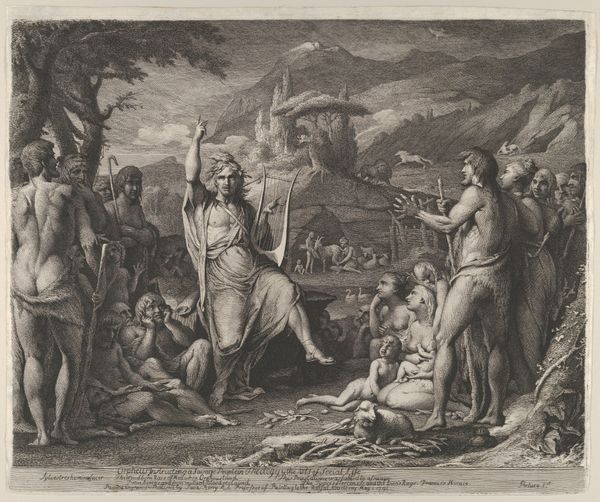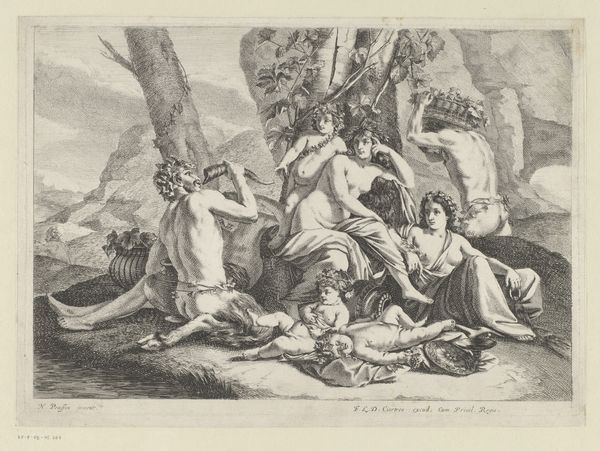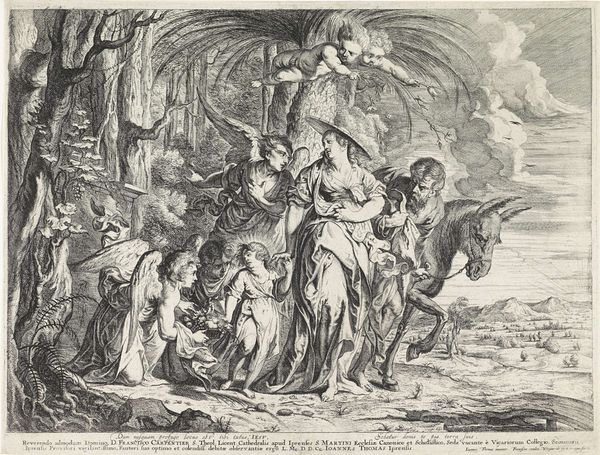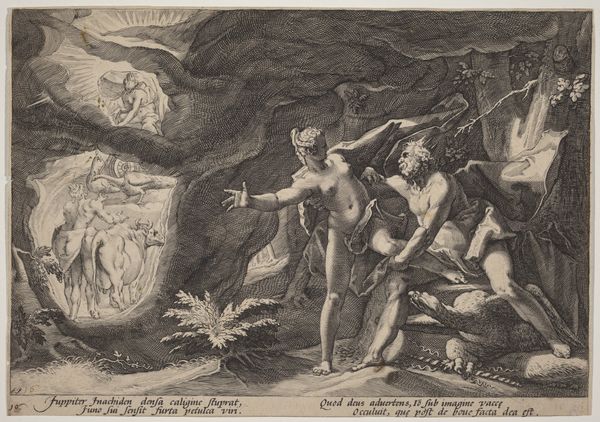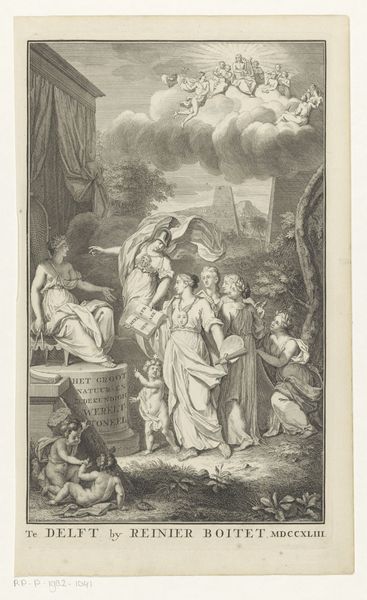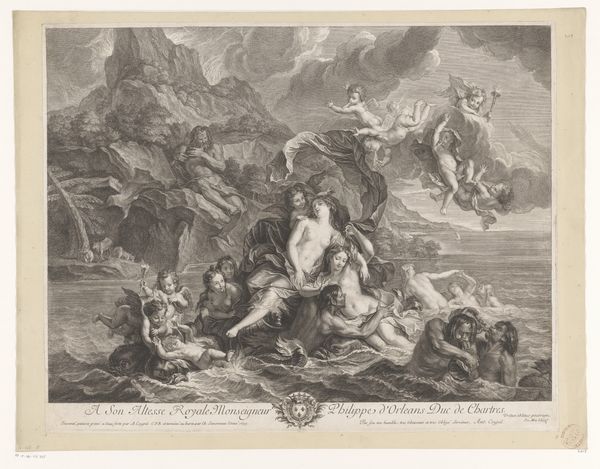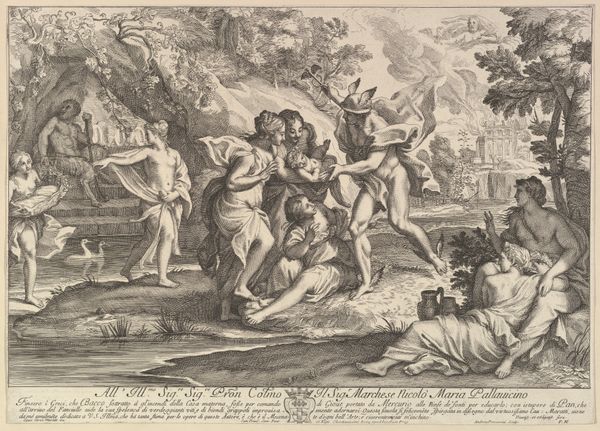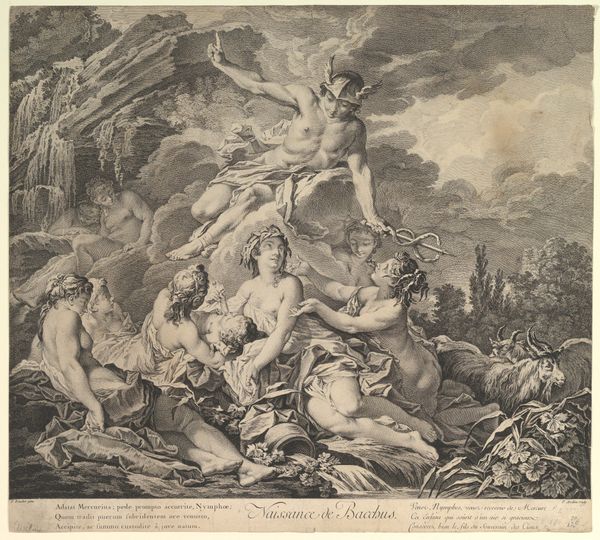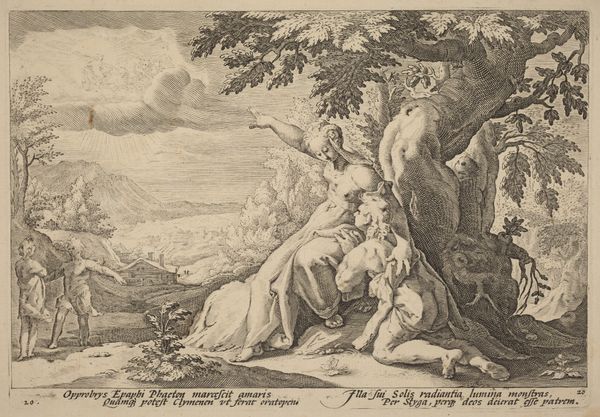
print, engraving
#
ink drawing
# print
#
landscape
#
mannerism
#
figuration
#
history-painting
#
engraving
Dimensions: sheet: 18.5 x 26 cm (7 5/16 x 10 1/4 in.), cut to platemark
Copyright: National Gallery of Art: CC0 1.0
Curator: Looking at this engraving, “Deucalion and Pyrra Repeopling the Earth” created in 1589 by Hendrick Goltzius, what are your initial thoughts? Editor: The scale is deceptive—it feels monumental, yet intimate due to the medium. I’m drawn to the contrast between the smooth, almost porcelain-like bodies and the craggy, chaotic landscape. The print seems to embody labor—labor for the engraver and also a primordial labor to give birth to humanity. Curator: The print illustrates a story from Ovid’s *Metamorphoses*, a powerful narrative exploring themes of renewal after devastation. Goltzius, a master of Mannerism, uses his burin to reimagine a Greek myth for a late 16th century European audience. After the flood, Deucalion and Pyrra, instructed by an oracle, repopulate the earth by casting stones behind them, which then transform into people. It becomes this poignant origin story, reinterpreting narratives that continue to resurface when humanity faces trauma or genocide, especially in art created by women who have inherited their legacy. Editor: I agree. The attention to detail in the landscape versus the smoothness of their bodies creates a certain tension. It invites questions about what is valued – the hard material of the earth or the emerging human form. Is Goltzius subtly highlighting the manual labor needed for rebirth and comparing it to his work as an engraver of these lines? The emphasis on material process is critical here. It shows the engraver, like the figures, breathes life into material, creating and recreating realities. Curator: Absolutely, there’s this parallel between artistic creation and procreation, imbuing it with an awareness of the gendered power dynamics inherent to both endeavors. You can’t escape this interpretation when reading it from a feminist lens. In this act of recreating life, who holds agency? Is there a comparison between how the myth is told from a patriarchal standpoint and what Goltzius tries to embody? Editor: I think it is this exploration, this tangible, visual conversation with material, labor, and mythology that truly draws me in. It prompts us to remember what is involved in any creative enterprise and questions of societal values embedded within. Curator: Right. Looking through the lenses of myth and gender politics only gives you the freedom to critically engage with this. It offers an opportunity to reconsider dominant perspectives and explore avenues of artistic and cultural evolution.
Comments
No comments
Be the first to comment and join the conversation on the ultimate creative platform.
